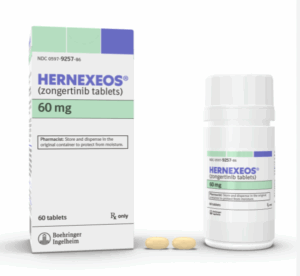Background – Glioblastoma and MDNA55
The interleukin-4 receptor–targeted immunotherapeutic MDNA55 has demonstrated improved survival and disease control in patients with recurrent Glioblastoma who are treated at high dose, irrespective of interleukin-4 receptor expression.
This outcome of the MDNA55-05 study was reported at the 2020 Society for Neuro-Oncology, SNO, Virtual Meeting about two weeks ago.
MDNA55 is an interleukin-4 receptor–targeted toxin in development for Glioblastoma. Interleukin-4 receptors. IL4Rs, are overexpressed in Glioblastoma and the tumor microenvironment.
About the Study
The Duke University Medical Center researchers delivered MDNA55 by convection Enhanced Delivery, CED, as a single treatment for recurrent Glioblastoma at first or second recurrence.
A control arm was constructed from patient registries.
Results
- In all 44 patients the median survival was 11.6 months
- 46% of participating patients were alive at 12 months
- A subpopulation consisting of 32 patients with high expression of interleukin-4 receptor + only patients with low expression of interleukin 4 receptor who were treated with a high dose exhibited the most benefit: Median survival is 15 months and 55% were alive at 12 months.
- Disease control was seen in 81% of this subpopulation
- Comparison against the control arm demonstrated >100% increase in median survival: 15.7 vs 7.2 months and the mortality risk during the treatment was reduced by nearly half
Conclusions
- No approved therapies for recurrent Glioblastoma can extend survival by 50%
- The potential of MDNA55 to extend survival by >100% in Glioblastoma is promising
Contact us to find out what is the best treatment for YOU
TRIAL•IN Pharma
Because we, do not give up on life!
Contact us 24/7 –
Call center +44.2082.426.039
About Glioblastoma
Glioblastoma Multiforme, or GBM, is a type of cancer which originates in the brain and made of brain cells known as “gliomas.”
Gliomas are neuron supporting cells, constituting a part of the nervous system.
The disease tends to develop into a star shaped formation. They are particularly aggressive tumors with the potential to grow fast and spread to other parts of the brain relatively quickly.
Glioblastoma creates its own independent blood supply which feeds it, promoting its growth and even enabling it to invade additional areas of the brain and establish more foci, hence the name “multiforme.”
GBM is a stage 4 cancer and constitutes about 50% of all brain tumors among patients aged 18 and older. Glioblastoma does not metastasize outside the brain.
The existing therapies used for GBM are not curative, and this is a source of the need for innovative and effective treatment strategies in order to fight the disease.








